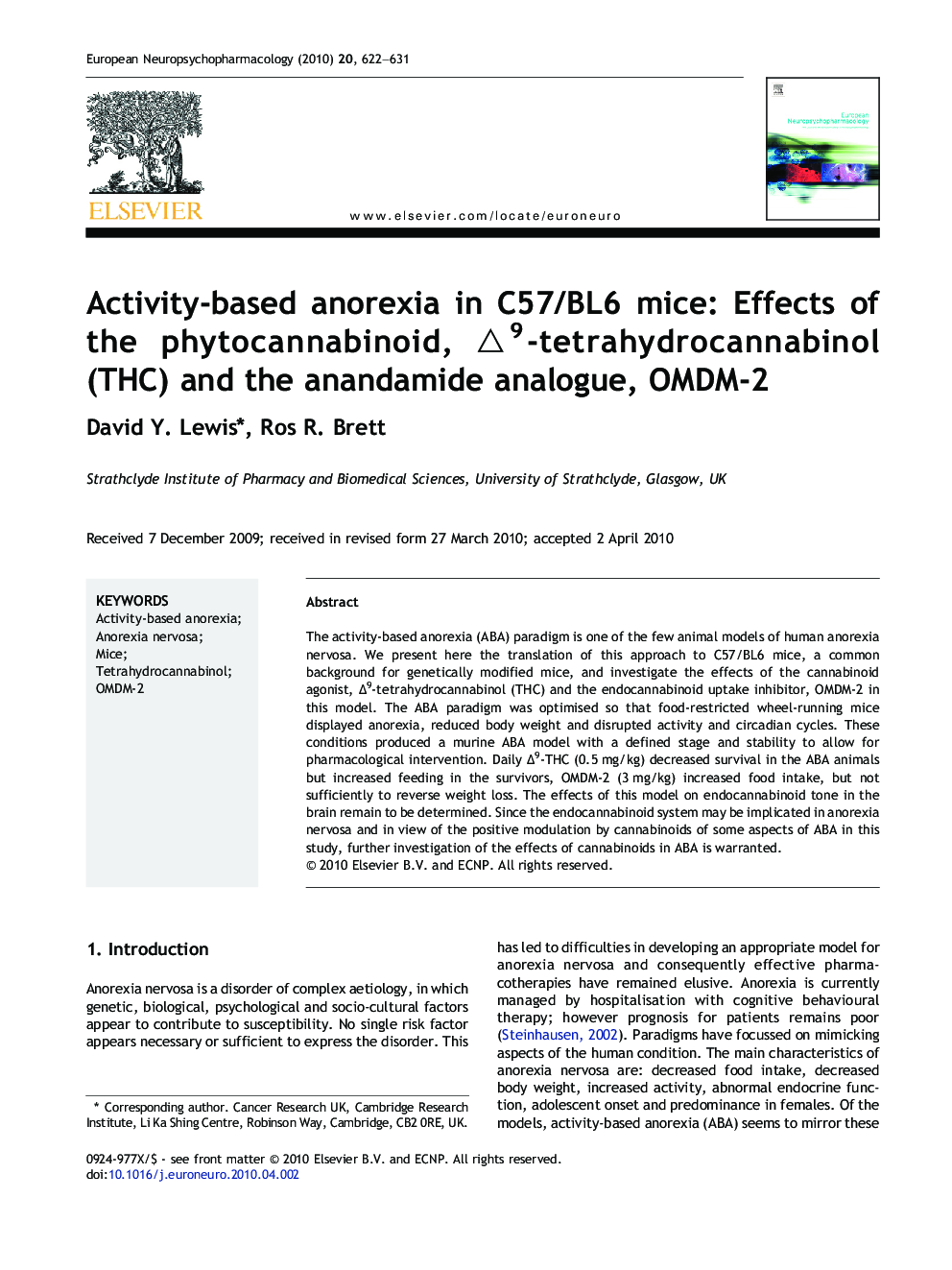| کد مقاله | کد نشریه | سال انتشار | مقاله انگلیسی | نسخه تمام متن |
|---|---|---|---|---|
| 319719 | 539577 | 2010 | 10 صفحه PDF | دانلود رایگان |

The activity-based anorexia (ABA) paradigm is one of the few animal models of human anorexia nervosa. We present here the translation of this approach to C57/BL6 mice, a common background for genetically modified mice, and investigate the effects of the cannabinoid agonist, Δ9-tetrahydrocannabinol (THC) and the endocannabinoid uptake inhibitor, OMDM-2 in this model. The ABA paradigm was optimised so that food-restricted wheel-running mice displayed anorexia, reduced body weight and disrupted activity and circadian cycles. These conditions produced a murine ABA model with a defined stage and stability to allow for pharmacological intervention. Daily Δ9-THC (0.5 mg/kg) decreased survival in the ABA animals but increased feeding in the survivors, OMDM-2 (3 mg/kg) increased food intake, but not sufficiently to reverse weight loss. The effects of this model on endocannabinoid tone in the brain remain to be determined. Since the endocannabinoid system may be implicated in anorexia nervosa and in view of the positive modulation by cannabinoids of some aspects of ABA in this study, further investigation of the effects of cannabinoids in ABA is warranted.
Journal: European Neuropsychopharmacology - Volume 20, Issue 9, September 2010, Pages 622–631